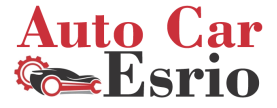The Controller Area Network (CAN) bus system acts as the central nervous system of modern vehicles, facilitating communication between various electronic control units (ECUs). Think of it as a shared highway connecting all the different computer modules in your car. This network allows components like the engine management system, transmission control unit, anti-lock braking system, and, importantly, the power lock system to exchange information and coordinate their actions. The CAN bus eliminates the need for direct, point-to-point wiring between each component, simplifying the wiring harness, reducing weight, and improving overall reliability. Without the CAN bus, the complex functionality of modern vehicles, including features like automatic locking and remote keyless entry, simply wouldn’t be possible.
How the CAN Bus Facilitates Communication
The magic of the CAN bus lies in its ability to allow multiple devices to transmit and receive data on the same network. Each ECU on the network has a unique identifier, and when it transmits a message, it broadcasts it to the entire network. Each ECU then examines the message identifier to determine if the message is relevant to its function. For example, if the body control module (BCM) sends a message indicating that the driver has pressed the unlock button on the key fob, the power lock ECU will recognize this message and initiate the unlock sequence. This “broadcast” system ensures that all relevant ECUs receive the information they need to perform their designated tasks.
The Car’s Computer and Power Lock Interaction
The power lock system itself is usually controlled by a dedicated ECU or integrated into the BCM. These modules receive signals related to door lock status from various sources, including the key fob, door switches, and the anti-theft system. They then interpret these signals and send commands over the CAN bus to the door lock actuators. These actuators are small electric motors that physically move the locking mechanisms within the doors. The CAN bus allows for sophisticated control strategies, such as automatically locking the doors when the vehicle reaches a certain speed or preventing the doors from locking if a key is detected inside the vehicle. Choosing the Auto Repair in Logan, UT based service would be essential under this matter.
The Lock/Unlock Command Journey

The process begins when you press the unlock button on your key fob. The key fob transmits a radio frequency (RF) signal to the vehicle’s receiver. The receiver then interprets this RF signal and sends a message over the CAN bus, typically to the BCM. The BCM verifies the signal’s validity (ensuring it originates from an authorized key fob) and then sends a “unlock doors” command over the CAN bus.
Benefits of CAN Bus Integration for Power Locks
Integrating the power lock system with the CAN bus provides numerous advantages. It enables features like centralized control, allowing the system to be controlled from multiple locations, including the key fob, door switches, and even the infotainment system in some vehicles. It also facilitates diagnostics, as any issues with the power lock system can be easily identified by scanning the CAN bus for error codes. Furthermore, it allows for greater customization, as manufacturers can easily program the system to respond to various conditions, such as locking the doors automatically when the car starts moving.




